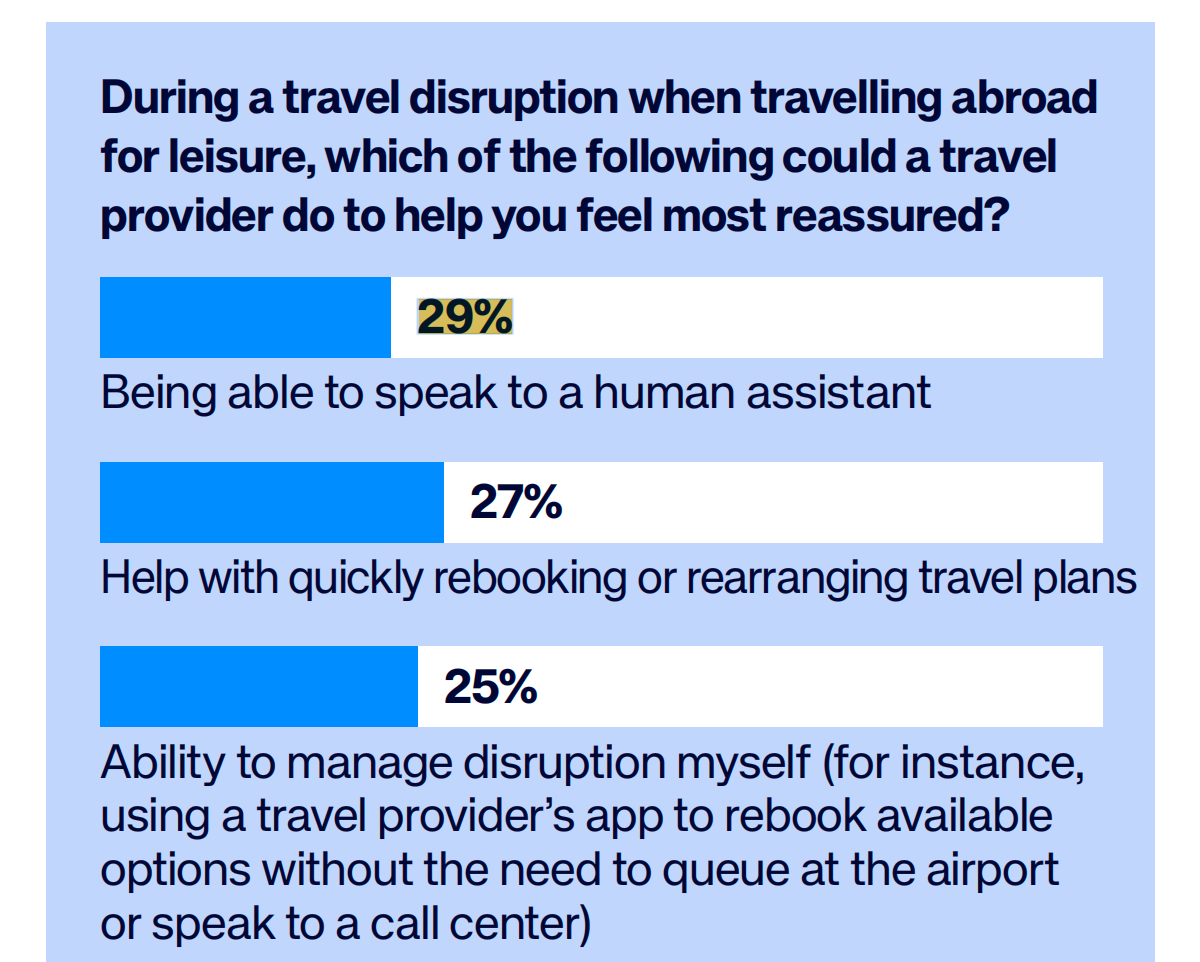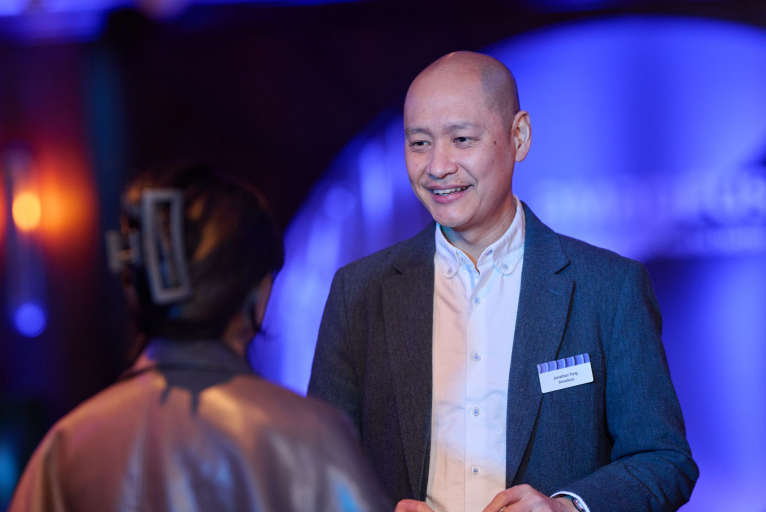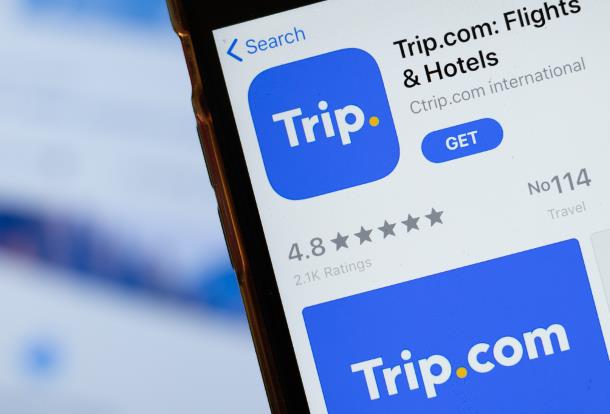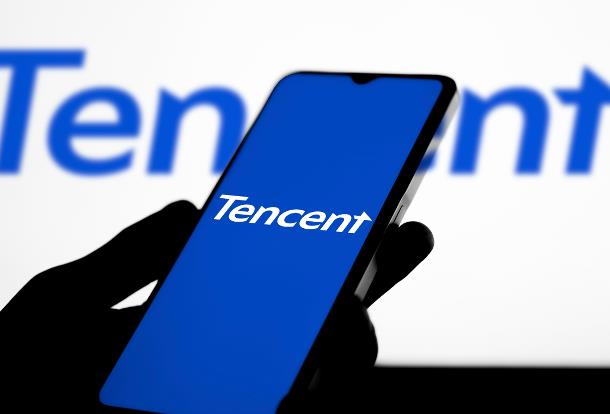Artificial intelligence is racing into every corner of the travel industry.
From flight recommendations and smart customer service to personalized trip planning, the use of generative AI has surged 64% in the past year.
Yet behind the hype lies a sobering reality.
Even though AI can now rebook flights or plan itineraries in seconds, many travelers still prefer to queue up—just to talk to a human agent.
That’s no hypothetical. According to Amadeus’ latest report, Connected Journeys: How Technology Will Transform Travel in the Next Decade, while 25% of travelers appreciate the convenience of digital self-service, 29% say that when disruptions occur, nothing is more reassuring than speaking with a real person.

The data reveals a paradox: AI is supposed to make travel faster and smarter, yet people’s desire to feel understood has only grown stronger.
The real challenge for travel tech may not be algorithmic performance, but finding the right balance between efficiency and trust.
And it’s easy to see why travelers still have doubts. Although 64% have tried generative AI to plan trips, one in four report that the results were “outdated or inaccurate.”
In other words, AI can answer fast—but not necessarily right.
As algorithms quietly take over each step of the journey, a new question emerges:
Do we really want greater efficiency—or to be truly understood?
AI doesn’t replace humans—it amplifies them
Across the travel tech landscape, nearly every company is exploring how AI can boost efficiency and improve experience.
Amadeus, a leading travel technology and core infrastructure provider for airlines, OTAs, hotels, and airports, is no exception. Its systems shape the journeys of hundreds of millions of travelers worldwide.
So, does AI replace people—or amplify them?
“Our goal isn’t just to make systems faster,” said Jonathan Tong, Senior Vice President, Airlines, Southeast Asia, China & India at Amadeus. “It’s to let technology truly enable and enhance the traveler experience—to make journeys smoother, and warmer.”

AI, he emphasized, isn’t meant to replace humans. It’s designed to help travelers at critical moments—identity verification, security, flight changes—get the right information faster, make confident decisions, and reduce anxiety.
“When travelers don’t know what to do next,” he said, “AI can instantly show them their options and even offer a direct rebooking path. That gives them back a sense of control.”
The biggest shift, Jonathan added, is not automation itself, but the return of decision-making power to the traveler—the essence of what “smart” travel should mean.
Speed is the baseline, trust the real differentiator
To most travelers, everything just “works”: flight changes update instantly, seats refresh automatically, disruptions resolve themselves.
But behind the scenes lies a web of real-time conversations among systems—where AI acts as an invisible collaborator.
Jonathan noted that China’s travelers and OTAs operate at an exceptional pace.
“If your system can’t return the best result in milliseconds,” he said, “travelers won’t wait—they’ll jump to another platform.”
“Only by offering the right options and solutions do you even have a chance to convert them.”
That’s why Amadeus’ architecture is built to make such “seamless experiences” possible—synchronizing data, pricing, and inventory across airlines, OTAs, and hotels in real time.
For example, Amadeus powers the search and booking engines of major Chinese platforms such as Trip.com, Meituan, and Fliggy. Even during peak demand—when tens of thousands of users search flights and hotels simultaneously—the system updates instantly, ensuring accuracy and responsiveness.
Its algorithms continuously learn from traveler behavior, predicting which flights or hotels are most likely to be chosen—optimizing results before the traveler even clicks.
Still, rapid AI adoption brings new risks.
“Providers must understand how much travelers actually trust AI and find the balance. Without empathy and trust, automation won’t scale.”
In short, efficiency is now the baseline; trust has become the competitive edge.
The boundary of trust: understanding without overstepping
For AI to “understand” people, it needs data—but respecting boundaries has become the industry’s next big challenge.
Jonathan said Amadeus focuses on helping partners like airlines and airports share data more effectively to make journeys smoother.
“We work with partners to connect information in ways that make services more efficient,” he explained.
The company’s AI models analyze group behavior and choice patterns to help partners refine products and distribution, without touching individual identities or private data.
What Amadeus builds are connections between data—not intrusions into people.
This “understanding at a distance” makes systems smarter while keeping lines clear.
As AI spreads across the industry, technology grows sharper—but trust grows scarcer.
Ultimately, true innovation isn’t about building stronger systems, but more stable relationships.
The A2A Era: When AI starts talking to AI
Looking ahead, Jonathan described a concept gaining traction—A2A (Agent to Agent) interaction.
“In the future, every traveler will have their own AI assistant, and so will every airline or hotel. These agents will talk to each other—making decisions and completing bookings on behalf of their users,” he said. “Our job is to provide the language, logic, and trust infrastructure that enables that dialogue.”
That future marks a shift from “human-to-system” to “system-to-system” collaboration.
Travelers will experience faster responses and more personalized options—powered by a silent choreography of algorithms behind the scenes.
A2A’s rise could redefine how travel distribution works.
Brands will need to learn not only how to serve travelers directly, but also how to serve travelers’ AI assistants.
It may sound far-fetched, but Jonathan believes it’s inevitable.
“When that day comes, travel providers will have to rethink who they’re really engaging with—it won’t just be the traveler, but the traveler’s AI agent.”
For now, though, he admits the road ahead is long.
The end of technology is understanding
Smart technology can shorten the path of travel—but it also deepens the questions we ask.
It can predict a delay, but not a traveler’s mood; optimize a process, but not define the meaning of an experience.
As AI gradually weaves itself into every journey, it will make travel more efficient—and the industry more precise.
But as Jonathan put it, the ultimate goal of technology isn’t replacement—it’s understanding.
“AI’s role,” he said, “is to make every journey smoother—and more human.”
Perhaps, in the future, trips will be planned by AI, optimized by algorithms, and executed by systems.
Yet what people remember most will still be that fleeting moment of connection—when anxiety meets reassurance, and confusion finds direction.
That, ultimately, is what AI struggles to achieve—and what makes it worth striving for.




